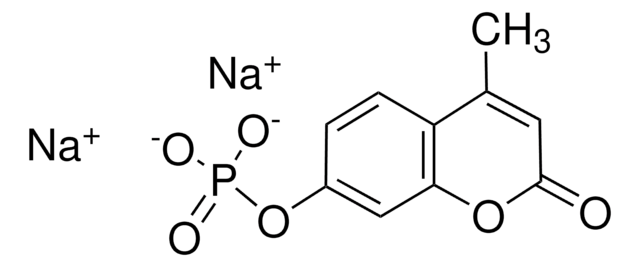L2145
L-Leucine-7-amido-4-methylcoumarin hydrochloride
fluorogenic, ≥98% (TLC), powder
Synonym(s):
H-L-Leu-AMC HCl
About This Item
Recommended Products
product name
L-Leucine-7-amido-4-methylcoumarin hydrochloride,
Assay
≥98% (TLC)
form
powder
solubility
methanol: 50 mg/mL, clear, colorless to faintly yellow
fluorescence
λex 327 nm; λem 349 nm (pH 8.0)
λex 380 nm; λem 440 nm (Reaction product)
storage temp.
−20°C
SMILES string
Cl.CC(C)C[C@H](N)C(=O)Nc1ccc2C(C)=CC(=O)Oc2c1
InChI
1S/C16H20N2O3.ClH/c1-9(2)6-13(17)16(20)18-11-4-5-12-10(3)7-15(19)21-14(12)8-11;/h4-5,7-9,13H,6,17H2,1-3H3,(H,18,20);1H/t13-;/m0./s1
InChI key
VCRXITKKWBOQRZ-ZOWNYOTGSA-N
General description
Application
- as a substrate in fluorescence-based soil assays
- to determine leucine aminopeptidase activity of both Plasmodium falciparum M1 (PfA-M1) and PfA-M17 enzymes
Storage Class Code
11 - Combustible Solids
WGK
WGK 3
Flash Point(F)
Not applicable
Flash Point(C)
Not applicable
Personal Protective Equipment
Certificates of Analysis (COA)
Search for Certificates of Analysis (COA) by entering the products Lot/Batch Number. Lot and Batch Numbers can be found on a product’s label following the words ‘Lot’ or ‘Batch’.
Already Own This Product?
Find documentation for the products that you have recently purchased in the Document Library.
Customers Also Viewed
Our team of scientists has experience in all areas of research including Life Science, Material Science, Chemical Synthesis, Chromatography, Analytical and many others.
Contact Technical Service










